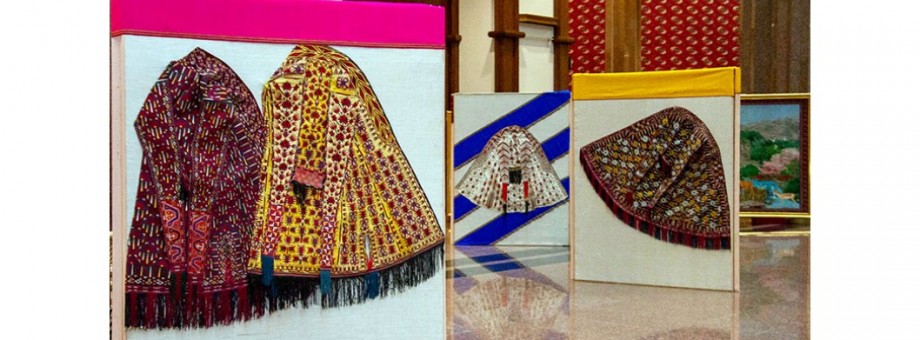RED KURTE MEANS WEDDING CAPE FOR THE BRIDE

Legends can be made about the skillful needlework of Turkmen women. Turkmen women at all times decorated their homes with beautiful carpets, the fame of which spread throughout the world. But they paid no less attention to their clothes. From time immemorial, Turkmen women have learned to decorate their dresses with elegant embroidery, which emphasized the originality of the national costume.
An integral part of folk arts and crafts are capes, which play the role of a cloak, covering women from heat and cold. Only Turkmen women wear them in a special way, throwing them over their heads. And to make the capes look elegant, they use a headdress decorated with silver inlays.
It is not customary for Turkmens to ask the age of a woman. Yes, this is not necessary, just look at the head cape and it will become clear to which age category the woman you are interested in belongs to. And all because capes, depending on the age of their owner, are graded by color. Red, green, yellow and white capes represent summer, spring, autumn and winter.
We learned these and other subtleties associated with the head capes of Turkmen women by visiting the exposition of the State Museum of the State Cultural Center. According to the story of Enedzhan Altiyeva, an employee of the museum, when the bride got married, she was covered with a red kurta. As a rule, they were decorated with gochak, ichanagyz, tazyguiruk, okgozi, tegbent, channa, and couple patterns. Brides wore a red cape for 40 days.
Then the young woman changed the red cloak to the green one. Yashil chirpy was the name of the green cape that a woman wore on holidays up to 40 years old. The green color personifies spring, the flowering of nature, the beauty of the surrounding world, and this somehow correlates with a woman under 40 years old.
A middle-aged woman used a yellow cape, symbolizing autumn, the ripening of fruits, allegorically, the same thing happens in the family of a woman who raised children, who is respected among relatives and neighbors.
Having reached the age of the Prophet, a woman puts on a white chirpy, symbolizing wisdom and authority.
Head capes are sewn from natural, hand-woven keteni fabric. The sleeves have not a practical, but a decorative purpose, therefore, along with real sleeves, there are also false ones, more often in women from the southern regions. Patterns are embroidered by hand, which takes on average up to several months.
The State Museum of the State Cultural Center received a gift from the mother of the President of Turkmenistan Ogulabat eje kurte, embroidered by her for her sister-in-law. Perhaps just this fact has sharpened the interest of society in this attribute of the women's national costume. Turkmen people are looking forward to the release of the feature film "Red Kurte", which is being staged by the Turkmen Association «Turkmenfilm» named after. Oguzkhan.
The exposition includes more than 30 exhibits of the kurte of Turkmen women living in all regions of our country. The exhibition is decorated with carpet panels and paintings by folk artists of Turkmenistan, who, in admiration for the skill of our needlewomen, dedicated their canvases to them: Izzat Klychev «Magic Patterns», Shamuhammet Akmukhammedov «Folk Art», Gulnaraz Bekmuradov «Ornaments».
Red kurte means wedding cape for the bride (turkmenistan.gov.tm)


 NEWS
NEWS